Organized by the China Society of Image and Graphics(CSIG), the ICIG young scholar forum conducts academic exchanges and technical discussions around the frontier topics of image graphics basic theory and applied research, aiming to provide a platform for academic exchanges and cooperation for young scholars, enhance the vitality and cohesiveness of outstanding young talents, promote the growth of outstanding young talents in the field of image and graphics, show the latest research results of young talents, stimulate the innovation of young scientists, and promote and enhance the scientific and technological level and talent cultivation of image graphics in China.
The presenters and chairs of the forum mainly come from the representatives of the Young Elite Scientists Sponsorship Program by CAST and the CSIG Doctorial Dissertation Award. The forum will carry out exchanges and discussions on many fields, such as popularizing the knowledge of image graphics science and technology, exploring the frontier high-tech and application promotion, and professional development. It will play an important role in promoting the application and development of basic theory and subject technology of image graphics in China.
The forum will give full play to its academic leading role, attract young scholars to join the forum by conducting academic reports and seminars, and create a high-level and high-quality academic exchange environment. The researchers will discuss the development trends and research hotspots of image graphics, analyze the opportunities, challenges and missions faced by young scholars in the field of image graphics, inspire new academic ideas and innovations, and jointly explore the future.

Xinggang Wang
Huazhong University of Science and Technology
Title: Mask scoring R-CNN
Abstract: Letting a deep network be aware of the quality of its own predictions is an interesting yet important problem. In the task of instance segmentation, the confidence of instance classification is used as mask quality score in most instance segmentation frameworks. However, the mask quality, quantified as the IoU between the instance mask and its ground truth, is usually not well correlated with classification score. In this paper, we study this problem and propose Mask Scoring R-CNN which contains a network block to learn the quality of the predicted instance masks. The proposed network block takes the instance feature and the corresponding predicted mask together to regress the mask IoU. The mask scoring strategy calibrates the misalignment between mask quality and mask score, and improves instance segmentation performance by prioritizing more accurate mask predictions during COCO AP evaluation. By extensive evaluations on the COCO dataset, Mask Scoring R-CNN brings consistent and noticeable gain with different models, and outperforms the state-of-the-art Mask R-CNN. We hope our simple and effective approach will provide a new direction for improving instance segmentation. The source code of our method is available at https://github.com/zjhuang22/maskscoring_rcnn.
Biography:Xinggang Wang is an associate professor of the School of Electronics Information and Communications at Huazhong University of Science and Technology (HUST). His research interests are object detection and deep learning. He received a B.S. degree in communication and information system and the PhD degree in computer vision from HUST. From 2010 to 2011, he was a Visiting Scholar with the Department of Computer and Information Science, Temple University, Philadelphia, PA, USA. From 2013 to 2013, he was a Visiting Graduate Researcher with the University of California, Los Angeles. He is a reviewer of IEEE TPAMI, JMLR, Pattern Recognition, IEEE T. Cybernetics, IEEE TIP, IEEE TMM, IVC, IEEE TITS, CVIU, Neurocomputing, NIPS, ICDM, ICCV, ECCV, CVPR, ICME, ICIP, ICPR, AISTATS, ICML, ICIG, PRCV etc. He is a member of VALSE VOOC, Member of CSIG, Member of CCF, Member of IEEE. He won the Excellent Award of CCF-Tencent Research Fund, Excellent PhD Thesis Award Nomination of China Education Society OF Electronic, Excellent PhD Thesis Award of Hubei Province, Microsoft Research Asia Fellowship Award. He is the PI of several NSFC projects and the HUST-Horizon Robotics computer vision joint laboratory. He has published more than 60 papers, including 25 papers on top-tier conference journal papers. He has more than 2300 Google scholar citations.

Wengang Zhou
University of Science and Technology of China
Title: Weakly-supervised Learning for Continuous Sign Language Recognition
Abstract: As one of the most important ways to communicate with the deaf-mute, sign language (SL) is used by millions of people with hearing or spoken damage in their daily life. However, due to the lack of systematic study for sign language, it becomes very difficult for many people to communicate with the deaf-mute. In order to make such communication more convenient, it’s necessary to develop an effective algorithm for sign language recognition (SLR). In this talk, we are dedicated to weakly-supervised continuous sign language recognition (SLR), where for each sign video, there is only ordered gloss labels without temporal boundary along frames. We discuss our efforts which approach this problem from three different perspectives. Firstly, we introduce a continuous sign recognition framework, the Hierarchical Attention Network with Latent Space (LS-HAN), which eliminates the preprocessing of temporal segmentation. Secondly, we discuss an alignment network with iterative optimization for weakly supervised continuous sign language recognition. Thirdly, we formulate the continuous SLR as a semantic boundary detection problem with a reinforcement learning scheme. After that, we will discuss the prospect of the future research on SLR towards its industrial application.
Biography: Dr. Wengang Zhou is currently a Full Professor with the Department of Electronic Engineering and Information Science (EEIS), University of Science and Technology of China (USTC). Before joining USTC, he worked as a post-doctorate researcher in the Computer Science Department, University of Texas at San Antonio (2011-2013). He got his PhD degree from EEIS Department, USTC in 2011. His current research interests include multimedia analysis & retrieval, and computer vision. He has published over 100 journal articles and conference papers in these fields, including over 40 publications in ACM/IEEE Transactions and Tier-A International Conferences. He was the recipient of ICIMCS 2012 best paper reward and the Excellent PhD Thesis Award of Chinese Academy of Sciences in 2013. He served for multiple prestigious multimedia conference as a Program Committee Member including ACM MM, CVPR, AAAI, IJCAI, ECCV, ICME, ICIP, VCIP, etc. Dr. Zhou has been selected into the Youth Elite Scientists Scholarship Program by China Association for Science and Technology (CAST), the Youth Innovation Promotion Association of Chinese Academy of Sciences, and PI of the Excellent Young Scientists Fund of NSFC (2018).

Hui Bi
Nanjing University of Aeronautics and Astronautics
Title:Sparse Microwave Imaging: From Theory to Practical Application
Abstract:The seminar presents the recent research progress on sparse microwave imaging to deal with a few key issues for practical synthetic aperture radar (SAR) systems. In particular, we describe 1) an azimuth-range decouple based imaging technique that makes sparse reconstruction of large-scale scene possible; 2) a sparse microwave imaging technique that supports practical SAR data real-time processing; 3) a novel regularization recovery technique that well preserves the phase information and statistical distribution of recovered image, so that sparse imaging results can be used for many applications, such as SAR interferometry (InSAR).
Biography:Hui Bi was born in Shandong, China, in 1991. He received the Ph.D degree in signal and information processing from the University of Chinese Academy of Sciences, Beijing, China, in 2017. From 2012 to 2017, he worked in the Science and Technology on Microwave Imaging Laboratory, Institute of Electronics, Chinese Academy of Sciences (IECAS), China. In between, he worked also with the research group Signal Processing in Earth Observation (SiPEO) at Technical University of Munich (TUM), Munich, Germany as a co-supervised Doctoral researcher from 2014 to 2017. From 2017 to 2018, he was a Research Fellow with the School of Electrical and Electronic Engineering, Nanyang Technological University (NTU), Singapore. Since November, 2018, he has been working in the College of Electronic and Information Engineering, Nanjing University of Aeronautics and Astronautics (NUAA), Nanjing, China, as an
Associate Professor. His main research interests are sparse microwave imaging with compressive sensing, synthetic aperture radar data processing and application, sparse signal processing, and TomoSAR.
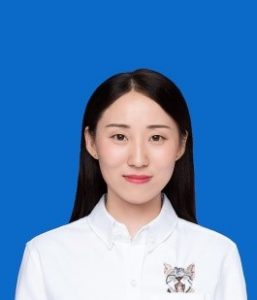
Yanni Dong
China University of Geosciences
Title:Metric Learning Methods for Hyperspectral Remote Sensing Imagery
Abstract:With the characteristic of the high spectral resolution and continuous spectral curve, hyperspectral images (HSI) contain large number of spectral bands for each pixel, and convey abundant spectral information, which can be used to distinguish subtle spectral differences even between the similar materials. Therefore, it has unique advantages to detect and classify certain materials with hyperspectral data. Although it has been found that there are many methods and technologies in HSI have made some progress based on the application and practice, the limitations of the existing methods and the characteristics of the HSI lead to several problems are still not well solved. Thus, this report aims to introduce some metric-learning-based methods, combining with the latest methods in machine learning and pattern recognition area, for hyperspectral remote sensing imagery processing. Metric learning is to learn a metric matrix, which usually specifies a traditional Mahalanobis distance metric by computing the relative position of the point-pairs. With the help of metric learning, we can find a distance metric which can effectively separate different classes with very limited samples.
Biography:Yanni Dong received the B.S. and Ph.D. degrees from Wuhan University, Wuhan, China, in 2012 and 2017, respectively.
Dr. Dong is currently an associate professor with Institute of Geophysics and Geomatics, China University of Geosciences, and also a Hong Kong Scholar with the Department of Land Surveying and Geo-Informatics, The Hong Kong Polytechnic University, Hong Kong. Her research interests include distance metric learning, hyperspectral image processing and pattern recognition.
Dr. Dong is a reviewer of more than twenty international journals, including the IEEE TCybern, TIP, TGRS, PR and so on. She is also the PC Member of IJCAI and AAAI.
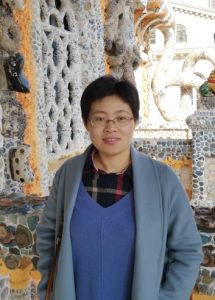
Jing Liu
Multimedia Institute of Tianjin University
Title:Bit-depth Up Conversion based on Encoder-Decoder Framework
Abstract:High dynamic range technology has advantages like high brightness and wide color gamut. It is one of the important themes for contemporary information and technology development of China. Although the high dynamic range has been a necessity for mainstream advanced televisions, the multimedia contents with high dynamic range are very rare, which obviously limits the development and application of high dynamic range technology. In order to meet the huge gap of high dynamic range contents, bit-depth up conversion (BUC) algorithms appears, which aims to convert the existing standard dynamic range contents into high dynamic range contents. Taking account of the shortcomings of the existing algorithms, we design encoder-decoder based structures for image/videos to address the following problems: 1) derivation of equal but more efficient residual formulation for BUC problem; 2) adversarial learning of the probability distribution of high bit-depth contents; 3) joint explore of spatio-temporal consistency for video-based BUC. Our works can generate visually pleasant pseudo-high dynamic range contents, facilitating the development and application of high dynamic range technology.
Biography: Jing Liu received the B.E. and Ph.D. degree from Shanghai Jiao Tong University, Shanghai, China, in 2011 and 2017, respectively. She is currently an Assistant Professor with the Multimedia Institute of Tianjin University. From 2014 to 2015, she was a visiting student with the Department of Computer Science and Engineering, State University of New York at Buffalo, U.S. Her research interests include multimedia signal processing and perceptual visual processing. She was nominated for the Outstanding Doctoral Dissertation Award of the Chinese Society of Image and Graphics and Outstanding Doctoral Dissertation of Shanghai Jiao Tong University. She serves as a leading guest editor for Multimedia Tools and Applications (Springer) and a Program Committee member of ACMMM2019. She is also a reviewer for several outstanding journals including IEEE TNNLS、TIP、TMM、TCSVT、JSTSP.
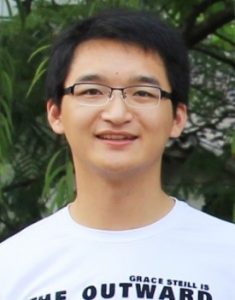
Chao Ma
Shanghai Jiao Tong University
Title:Learning Deep Regression Models for Visual Tracking
Abstract:Visual object tracking is challenging as target objects often undergo significant appearance changes. In this talk, I will present our work on how to best exploit deep regression networks to improve tracking accuracy and robustness. First, I will introduce our TPAMI 2018 (ICCV 2015) work, in which we adaptively learn correlation filters on hierarchical convolutional layers to precisely locate targets. Second, I will shortly present our ICCV 2017 work, where we reformulate correlation filters by a one-layer neural network. We additionally exploit the spatial and temporal residual learning scheme to facilitate visual tracking. Last, I will show our ECCV 2018 work, in which we propose a novel shrinkage loss to train deep regression networks for visual tracking. Extensive experimental results on largescale benchmark datasets show that the proposed algorithms perform favorably against state-of-the-art methods.
Biography:Chao Ma is an assistant professor at Shanghai Jiao Tong University. He received a Ph.D. degree from Shanghai Jiao Tong University in 2016. He was a post-doctoral researcher at the Australia Centre for Robotic Vision (The University of Adelaide) from 2016 to 2018. From 2013 to 2015, he was a joint-training Ph.D. student at the University of California, Merced. His research interests focus on computer vision and machine learning. His research work has published in a number of top-tier journals, such as TPAMI and IJCV, and conferences like ICCV, CVPR, ECCV, and NeurIPS. He is a guest editor of the journals, Pattern Recognition and IEEE Access. He serves as a reviewer for the journals and conferences including TPAMI, IJCV, TIP, ICCV, CVPR, ECCV, and IJCAI. He will serve as a session chair for IJCAI 2019. He was the recipient of the excellent doctoral dissertation award from China Society of Image and Graphics. He is an outstanding reviewer of CVPR 2018 and 2019. His work was cited more than 2100 times according to Google Scholar.
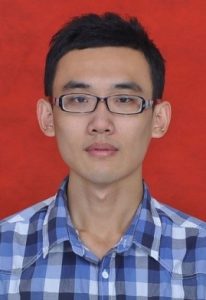
Chunlei Peng
Xidian University
Title:Deep Local Representation for Heterogeneous Face Synthesis and Recognition
Abstract:Heterogeneous face synthesis and recognition aims to analyze faces across different modalities, such as forensic sketches with photos, low resolution face images with high resolution images, and near infrared images with visual lighting images, which is challenging because of the modality gap caused by texture, resolution, and illumination variations. Existing approaches either utilized hand-crafted approaches which ignore inherent data distribution characteristic, or applied deep learning-based algorithms on holistic face images with facial local information ignored. Recently, we conducted a series of attempts to extract deep local representation from raw facial patches, where representative detail information for robust face synthesis and recognition can be exploited. Extensive evaluations on heterogeneous face datasets validate the superiority of our assumption.
Biography:Chunlei Peng received the B.Sc. degree in electronic and information engineering and the Ph.D. degree in information and telecommunications engineering from Xidian University, Xi’an, China, in 2012 and 2017, respectively. From 2016 to 2017, he was a visiting Ph.D. student with Duke University, NC, USA. He is currently with the School of Cyber Engineering, Xidian University. He has published over 10 papers in refereed journals and proceedings, including the IEEE TPAMI, TNNLS, TIP, TIFS, TCSVT, IJCAI, and ECCV. His current research interests include computer vision, pattern recognition, and machine learning.
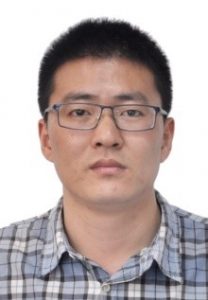
Sicheng Zhao
University of California Berkeley
Title:Affective Image Content Analysis
Abstract:Images can convey rich semantics and induce strong emotions in viewers. Recently, with the explosive growth of visual data, extensive research efforts have been dedicated to affective image content analysis (AICA). In this talk, I will introduce our recent work on AICA with respect to three main challenges — affective gap, perception subjectivity and domain shift. Firstly, I will briefly introduce the key emotion representation models. And then I will introduce our work on emotion feature extraction, personalized emotion prediction, emotion distribution learning, and domain adaptation. Finally, I will discuss some future research directions.
Biography:Sicheng Zhao is a postdoc research fellow at the Berkeley Artificial Intelligence Research Lab, University of California Berkeley with Prof. Kurt Keutzer. He obtained the Ph.D. degree from Harbin Institute of Technology, China, in 2016, under the supervision of Prof. Hongxun Yao. His research interests include multimedia affective computing, multimedia, and computer vision, especially focusing on visual emotion analysis and domain adaptation. His research works have been published in top-tier conferences and journals such as ACM MM, IJCAI, AAAI, CVPR, TAFFC, TCYB, TMM, etc.